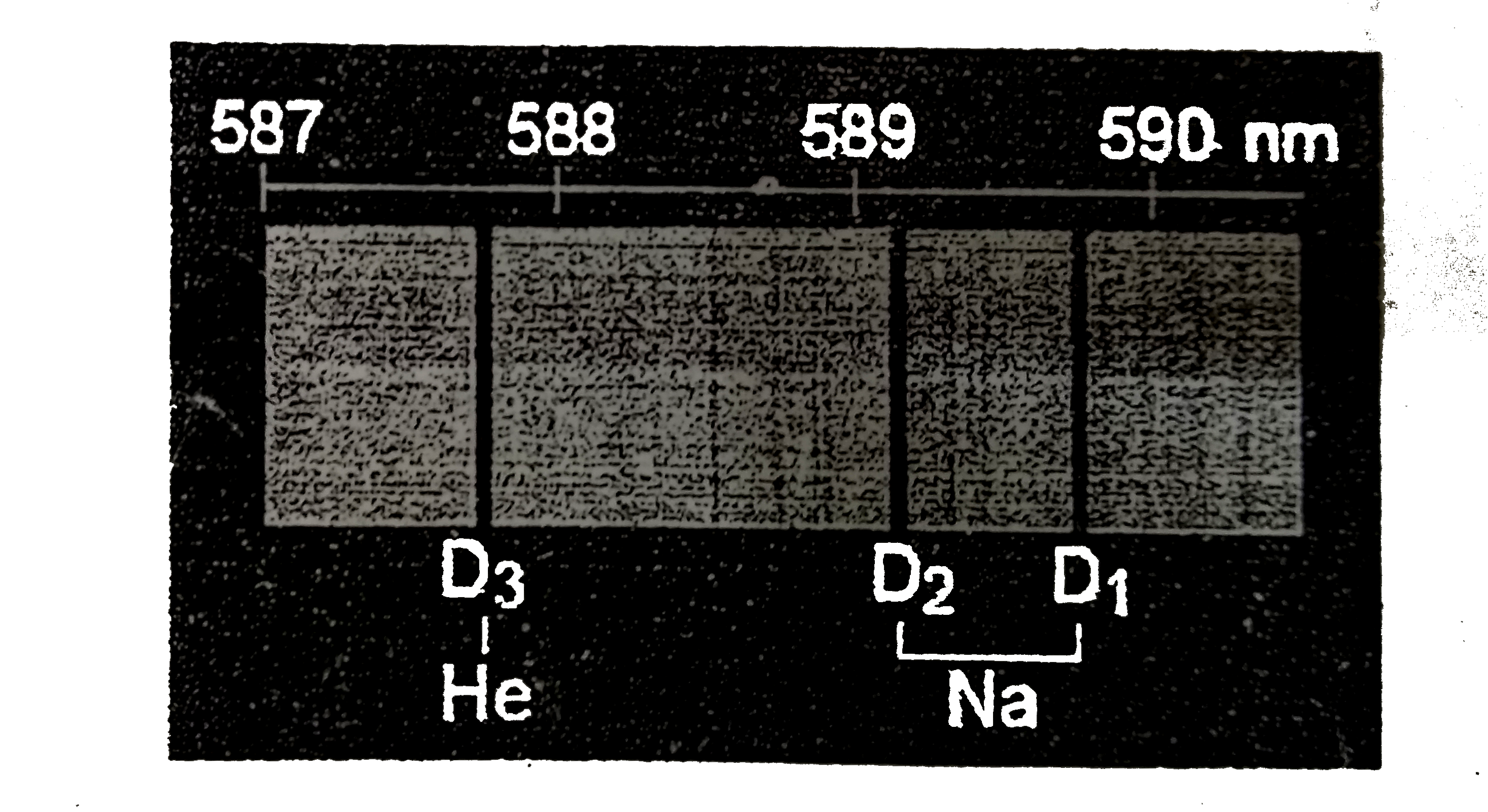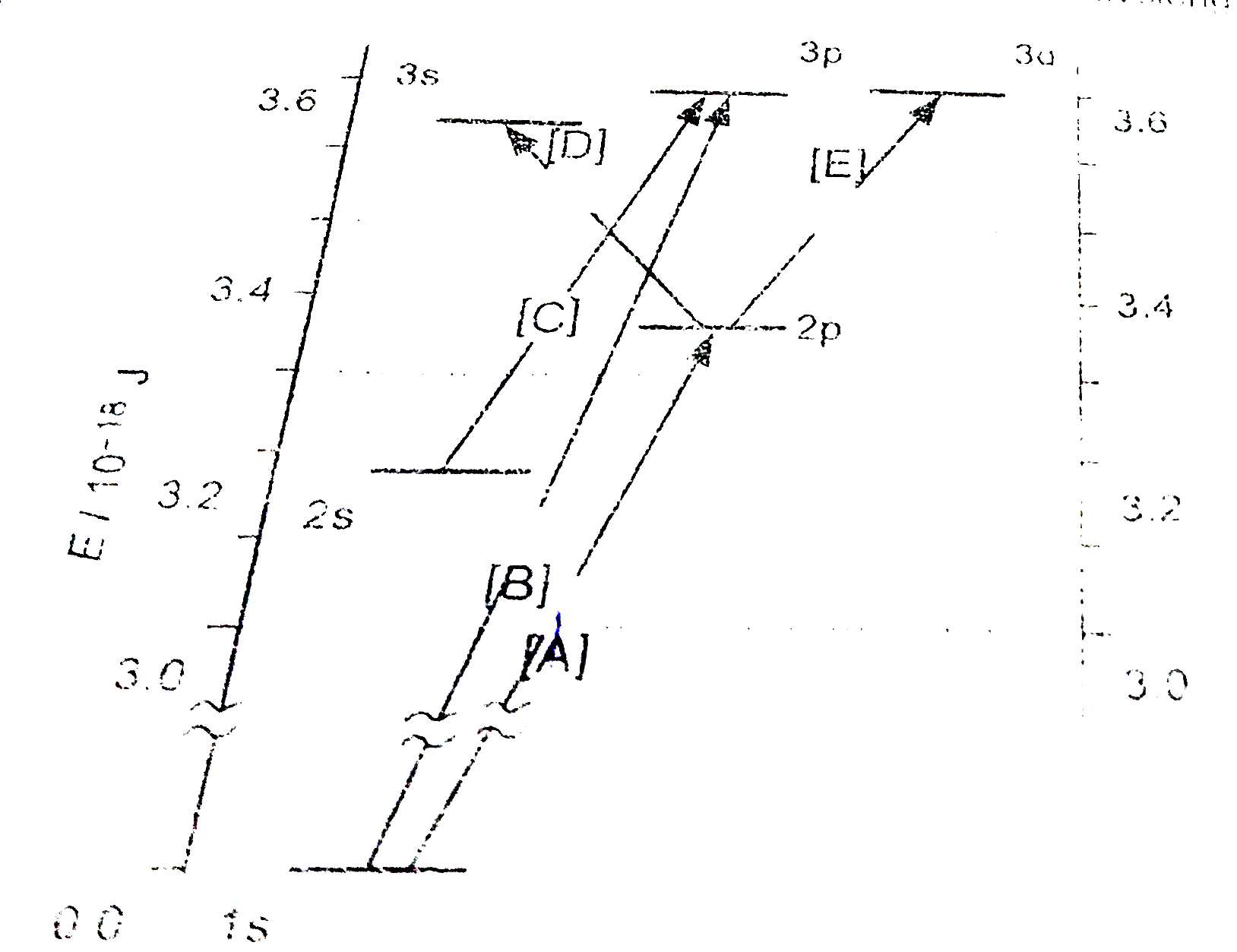In 1894, Lord Rayleigh reported that the mass of chemically prepared nitrogen was different from that of nitrogen extracted from the atmosphere, as shown in Tables 1 and 2. Latter, this difference was attributed to the presence of argon in atmospheric nitrogen. The masses of gases were mearsured by using a glass vessel with a known volume under atmospheric pressure (1.013×105Pa).
∣∣
∣
∣
∣
∣
∣
∣∣From nitric oxide2.3001gFrom nitrous oxide2.2990gFrom amonium nitrite purified at a red heat2.2987gFrom urea2.2985gFrom ammonium nitrite purified in the cold2.2987gMean2.2990g∣∣
∣
∣
∣
∣
∣
∣∣
∣∣
∣
∣
∣∣O2was removed by hot copper(1892)2.3103gO2was removed by hot iron(1893)2.3100gO2wasremovedbyferroushydrate(1894)2.3102gMean2.3102g∣∣
∣
∣
∣∣
Ramsay and cleve discovered helium in cleveite (a mineral consiting of uranium oxide and oxides of lead, thorium, and rare earths, an impure variety of uraninite) independently and virtually simultaneously in 1895. The gas extracted from the rock showed a unique spectroscopic line at around 588 nm (indicated by D3 in Figure 1), which was fist observed in the spectrum of solar prominence during a total eclipse in 1868, near the well-known D1 and D2 lines of sodium.

Which––––––– equation explains the occurrence of argon in rocks among [A] to [D] below? Mark one.
One of the strongest evidences for the monoatomicity of argon and helium is the ratio of the heat capacity under constant pressure to that at constant volume, γ=Cp/Cv, which is exactly 5/3(1.67±0.01) for a monoatomic gas. The ratio was derived from the measurement of speed of sound vs by using the following equation, where f and the frequency and wavelength of the sound, and R, T, and M denote the molar gas constant, absolute temperature, and molar mass, respectively.
vs=fλ=√γRTM
For an unknown gas sample, the wavelength of the sound was measured to be =0.116m at a frequency of f=3520Hz(Hz=s−1) and temperature of 15.0∘C and under atmospheric pressure (1.013.105Pa). The density of the gas for these conditions was measured to be 0.850±0.005kgm−3.
ArF2 Ar+F2
ArXe→Ar+Xe
^(40)K→^(40)Ar+ epsilon//beta^(+) (electron capture//position emission)
^(126)I→^(126)Ar+beta^(-)
The correct Answer is:[C] is a well known radioactive decay reaction occurring with a half life of the order of the earth age. No stable compound of Ar, such as ArF2 or ArXe, can be expected
Products of [D] should be ^(126)Xe+β−. The correct answer is [C]
Similar Questions
In 1894, Lord Rayleigh reported that the mass of chemically prepared nitrogen was different from that of nitrogen extracted from the atmosphere, as shown in Tables 1 and 2. Latter, this difference was attributed to the presence of argon in atmospheric nitrogen. The masses of gases were mearsured by using a glass vessel with a known volume under atmospheric pressure (1.013×105Pa).
∣∣ ∣ ∣ ∣ ∣ ∣ ∣∣From nitric oxide2.3001gFrom nitrous oxide2.2990gFrom amonium nitrite purified at a red heat2.2987gFrom urea2.2985gFrom ammonium nitrite purified in the cold2.2987gMean2.2990g∣∣ ∣ ∣ ∣ ∣ ∣ ∣∣
∣∣ ∣ ∣ ∣∣O2was removed by hot copper(1892)2.3103gO2was removed by hot iron(1893)2.3100gO2wasremovedbyferroushydrate(1894)2.3102gMean2.3102g∣∣ ∣ ∣ ∣∣
Ramsay and cleve discovered helium in cleveite (a mineral consiting of uranium oxide and oxides of lead, thorium, and rare earths, an impure variety of uraninite) independently and virtually simultaneously in 1895. The gas extracted from the rock showed a unique spectroscopic line at around 588 nm (indicated by D3 in Figure 1), which was fist observed in the spectrum of solar prominence during a total eclipse in 1868, near the well-known D1 and D2 lines of sodium.

Which––––––– equation explains the occurrence of helium in cleveite among [A] to [D] below? Mark one.View SolutionIn 1894, Lord Rayleigh reported that the mass of chemically prepared nitrogen was different from that of nitrogen extracted from the atmosphere, as shown in Tables 1 and 2. Latter, this difference was attributed to the presence of argon in atmospheric nitrogen. The masses of gases were mearsured by using a glass vessel with a known volume under atmospheric pressure (1.013×105Pa).
∣∣ ∣ ∣ ∣ ∣ ∣ ∣∣From nitric oxide2.3001gFrom nitrous oxide2.2990gFrom amonium nitrite purified at a red heat2.2987gFrom urea2.2985gFrom ammonium nitrite purified in the cold2.2987gMean2.2990g∣∣ ∣ ∣ ∣ ∣ ∣ ∣∣
∣∣ ∣ ∣ ∣∣O2was removed by hot copper(1892)2.3103gO2was removed by hot iron(1893)2.3100gO2wasremovedbyferroushydrate(1894)2.3102gMean2.3102g∣∣ ∣ ∣ ∣∣
Ramsay and cleve discovered helium in cleveite (a mineral consiting of uranium oxide and oxides of lead, thorium, and rare earths, an impure variety of uraninite) independently and virtually simultaneously in 1895. The gas extracted from the rock showed a unique spectroscopic line at around 588 nm (indicated by D3 in Figure 1), which was fist observed in the spectrum of solar prominence during a total eclipse in 1868, near the well-known D1 and D2 lines of sodium.

Which––––––– equation explains the occurrence of helium in cleveite among [A] to [D] below? Mark one.View SolutionIn 1894, Lord Rayleigh reported that the mass of chemically prepared nitrogen was different from that of nitrogen extracted from the atmosphere, as shown in Tables 1 and 2. Latter, this difference was attributed to the presence of argon in atmospheric nitrogen. The masses of gases were mearsured by using a glass vessel with a known volume under atmospheric pressure (1.013×105Pa).
∣∣ ∣ ∣ ∣ ∣ ∣ ∣∣From nitric oxide2.3001gFrom nitrous oxide2.2990gFrom amonium nitrite purified at a red heat2.2987gFrom urea2.2985gFrom ammonium nitrite purified in the cold2.2987gMean2.2990g∣∣ ∣ ∣ ∣ ∣ ∣ ∣∣
∣∣ ∣ ∣ ∣∣O2was removed by hot copper(1892)2.3103gO2was removed by hot iron(1893)2.3100gO2wasremovedbyferroushydrate(1894)2.3102gMean2.3102g∣∣ ∣ ∣ ∣∣
Ramsay and cleve discovered helium in cleveite (a mineral consiting of uranium oxide and oxides of lead, thorium, and rare earths, an impure variety of uraninite) independently and virtually simultaneously in 1895. The gas extracted from the rock showed a unique spectroscopic line at around 588 nm (indicated by D3 in Figure 1), which was fist observed in the spectrum of solar prominence during a total eclipse in 1868, near the well-known D1 and D2 lines of sodium.

Identify––––––––– the transition relevant to the D3 line of helium among the transitions [A] to [E] indicated in Figure 2. Mark one of the following:
[A] [B] [C] [D] [E]View SolutionIn 1894, Lord Rayleigh reported that the mass of chemically prepared nitrogen was different from that of nitrogen extracted from the atmosphere, as shown in Tables 1 and 2. Latter, this difference was attributed to the presence of argon in atmospheric nitrogen. The masses of gases were mearsured by using a glass vessel with a known volume under atmospheric pressure (1.013×105Pa).
∣∣ ∣ ∣ ∣ ∣ ∣ ∣∣From nitric oxide2.3001gFrom nitrous oxide2.2990gFrom amonium nitrite purified at a red heat2.2987gFrom urea2.2985gFrom ammonium nitrite purified in the cold2.2987gMean2.2990g∣∣ ∣ ∣ ∣ ∣ ∣ ∣∣
∣∣ ∣ ∣ ∣∣O2was removed by hot copper(1892)2.3103gO2was removed by hot iron(1893)2.3100gO2wasremovedbyferroushydrate(1894)2.3102gMean2.3102g∣∣ ∣ ∣ ∣∣
Ramsay and cleve discovered helium in cleveite (a mineral consiting of uranium oxide and oxides of lead, thorium, and rare earths, an impure variety of uraninite) independently and virtually simultaneously in 1895. The gas extracted from the rock showed a unique spectroscopic line at around 588 nm (indicated by D3 in Figure 1), which was fist observed in the spectrum of solar prominence during a total eclipse in 1868, near the well-known D1 and D2 lines of sodium.

Identify––––––––– the transition relevant to the D3 line of helium among the transitions [A] to [E] indicated in Figure 2. Mark one of the following:
[A] [B] [C] [D] [E]View SolutionIn 1894, Lord Rayleigh reported that the mass of chemically prepared nitrogen was different from that of nitrogen extracted from the atmosphere, as shown in Tables 1 and 2. Latter, this difference was attributed to the presence of argon in atmospheric nitrogen. The masses of gases were mearsured by using a glass vessel with a known volume under atmospheric pressure (1.013×105Pa).
∣∣ ∣ ∣ ∣ ∣ ∣ ∣∣From nitric oxide2.3001gFrom nitrous oxide2.2990gFrom amonium nitrite purified at a red heat2.2987gFrom urea2.2985gFrom ammonium nitrite purified in the cold2.2987gMean2.2990g∣∣ ∣ ∣ ∣ ∣ ∣ ∣∣
∣∣ ∣ ∣ ∣∣O2was removed by hot copper(1892)2.3103gO2was removed by hot iron(1893)2.3100gO2wasremovedbyferroushydrate(1894)2.3102gMean2.3102g∣∣ ∣ ∣ ∣∣
Ramsay and cleve discovered helium in cleveite (a mineral consiting of uranium oxide and oxides of lead, thorium, and rare earths, an impure variety of uraninite) independently and virtually simultaneously in 1895. The gas extracted from the rock showed a unique spectroscopic line at around 588 nm (indicated by D3 in Figure 1), which was fist observed in the spectrum of solar prominence during a total eclipse in 1868, near the well-known D1 and D2 lines of sodium.

Calca––te––––––––– the energy E[J] of a photon with the wavelength of the D3 line of helium shown in Figure 1

Figure 2. Energy diagram of atomic orbitals of helium when an electron resides in the 1s orbital.
Figure 2 shows an energy diagram of the atomic orbitals of helium. The arrows indicate the ''allowed'' transitions according to the spectroscopic principle.View SolutionHow do oxides of nitrogen enter the atmosphere ?
View SolutionWhich is used for fixing atmospheric nitrogen
View SolutionThe presence of large amount of nitrogen in the atmosphere is due to:
View SolutionWhat is the pressure on a swimmer 10m below the surface of lake? g=10ms−2, atmospheric pressure = 1.01×105Pa
View SolutionWhat is the pressure on a swimmer 10m below the surface of lake? g=10ms−2, atmospheric pressure = 1.01×105Pa
View Solution

